There Us No Cold Only Absence of Heat Meme Funny
Nature is amazing, but we can sometimes take its awesomeness for granted. It seems normal to us, for example, that a seed only a few millimetres in size could become a towering tree. But have you ever stopped to really think about how, exactly, this seemingly magical transformation actually happens?
Like how does a seed take that first step from seed to seedling? Most people learn at school that plants grow by getting energy from the sun (via their leaves), and moisture and nutrients from the soil (via their roots). But where does a seed get energy and moisture to grow? Is the transformation from seed to seedling a simple case of 'just add water'?
Not exactly. While it's true that there are a few things, including water, that all seeds need to become seedlings, other seeds have more particular requirements—and some of them are pretty strange. Let's delve into the little powerpack that is a seed, and find out why snottygobbles need emus, why plants ❤ ants and why bushfires aren't all bad.
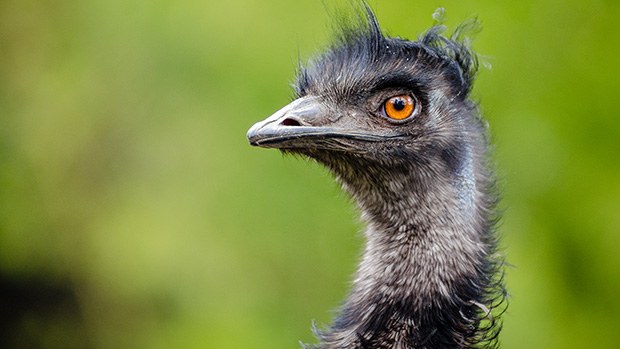
What is germination?
It all starts with a seed ...
Seeds come in all shapes and sizes. Some tropical rainforest orchids have seeds that are smaller than a pinhead—so small,in fact, that they are like dust. At the other end of the scale is the enormous Coco de Mer seed which can be up to 40 centimetres long and weigh as much as 18 kilograms, about the same weight as a medium-sized dog!
Essentially, though, a seed consists of:
- the dormant embryo—a young plant that formed from a fertilised egg cell
- the seed coat—which is a protective layer surrounding the whole package
- the food store—which contains all the nutrients (carbohydrates and protein) an embryonic plant needs to get going. During its early stages of growth, the seedling relies on this store until it's large enough for its own leaves to begin making food through photosynthesis. Different seeds store food reserved in different ways—some rely on large reserves of endosperm (nutritive tissue around the embryo), while others store food reserves in embryonic leaves.
- the cotyledon/s—which may become the embryonic first leaves of a seedling. In angiosperms (flowering plants), species with one cotyledon are called monocots, while plants with two cotyledon are known as dicots
In flowering plants, seeds develop in a fruit. The fruit protects seeds but also helps with their dispersal from one place to another. Sometimes the fruit is nice and soft and delicious, like a berry that attracts animals who then accidently carry the seed to a new home. Other times the fruits are hard and woody, like those of a banksia or eucalypt.
What seeds need to germinate
From the outside, seeds may look like they're pretty inactive—it can be easy to assume there's nothing much going on in there. In fact, experiments show that some of the tissues inside of seeds remain active, and even carry out some basic metabolic processes, such as cellular respiration . In other words, seeds use small amounts of stored energy, staying alive and 'waiting' for good conditions to begin to grow.
To germinate, all seeds need:
- water
- oxygen
- the right temperature
as well as a suitable place, and a little time.
Water
Most seeds need to take up water to germinate; this is known as imbibition . Water:
- hydrates enzymes in the seed, activating them. As a result the seed begins to release energy from its food store for growth.
- causes pressure to build in the embryo's cells, causing them to enlarge. This often results in the seed coat breaking open.
.jpg)
Oxygen
Seeds need oxygen so that they can produce energy for germination and growth.
The embryo gets energy by breaking down its food stores. Like all organisms, this is done through a process known as aerobic respiration —a series of reactions where energy is released from glucose, using oxygen. During aerobic respiration:
- glucose and oxygen are used up
- carbon dioxide and water are produced as waste, and energy is released.
Temperature
Seeds need the right temperature to germinate, and this varies depending on the species of plant and its environment. Some need fluctuations in temperature. Some need very cold conditions for a few weeks or even months before they will germinate at a higher temperature. This ensures that cold climate seeds, for example, delay germination until after winter.
What about light, you might wonder? Most seeds don't need light to set off germination—though the seedling will need it later on to carry out photosynthesis for energy, when the seed's food stores have been used up. Some seeds, however, need certain kinds or amounts of light to break dormancy—a kind of seed sleep, which we'll look at a bit more later. Such seeds can lie dormant for years, until, say, a tree falls, opening up a gap in the forest canopy and exposing the seed to light.
What happens during germination
Now that we know what a seed needs, let's look at what actually happens during germination.
- The seed takes up water, activating enzymes that begin the growth process.
- The embryo swells and lengthens.
- The embryo breaks through the seed's covering layers.
- The root meristem is activated and the embryonic root (radicle) pushes through.
- Cotyledons (embryonic leaves) break out.
- The shoot meristem is activated.
- 'True' leaves form—the plant is now able to get energy from the sun.
Interactive
How seeds germinate
Dormancy: seeds that know when to grow
Nearly all seeds are in a sort of suspended animation, called dormancy, until conditions are just right for them to germinate. Dormancy means that, even when exposed to water, oxygen and the right temperature, a seed may delay germination until it gets certain other environmental and chemical cues. A seed may be dormant while still on the parent plant (this is known as primary dormancy), or it may become dormant after it has left the parent plant (secondary dormancy).
Dormancy is a way that plants improve the chances of their offspring's survival and growth. It allows seeds to delay germination until, for example, temperatures are just right for the seedling to thrive. It also means that seeds can wait to become seedlings until they are at a distance from the parent plant (for example, by being eaten by animals and excreted elsewhere), which reduces competition with other seeds from the same parent. Finally, it allows the germination of seeds to be staggered—so, if bad weather comes along and destroys the first batch of seedlings, there will be some 'back-up' seeds.
Dormancy happens through a few different kinds of mechanisms, some of which happen outside the embryo (exogenous dormancy), others inside it (physiological dormancy). An example of an exogenous dormancy mechanism is a hard seed coat, which stops the seed absorbing water, and sometimes air. The hard seed coat may need to be broken by heat, freezing, or by passing through an animal's acidic guts. Dormancy may also be triggered by factors inside the embryo, especially chemical changes, which need to occur in the seed before it will germinate. Some seeds, for example, need a period of light or dark to germinate. Spinifex hirsutus, which grows in the sand dunes of Western Australia, has a better chance of growing when its seeds are deep in the dunes where the sand is stable and there is more moisture and nutrients—so its seeds won't germinate unless it's dark. Another kind of physiological dormancy is where a seed won't germinate until the embryo has grown to a certain size.
People working in the agricultural industry will often carry out processes that imitate these natural ones in order to break dormancy and get seeds to germinate—for instance, by chilling seeds to imitate cold weather or by applying abrasives to weaken the seed coat.
Fire and smoke
Fire
Some Australian plants need to be exposed to the heat of fire for the germination process to begin. A short burst of heat from a bush fire is thought to crack the hard seed coat of native peas and acacias (wattles).
In contrast to those plants that release their seeds spontaneously when they reach maturity, fire is also needed for some species to release their seeds from woody fruits. These plants rely on an environmental cue—in this case, fire—to know when to drop their seeds. They include species of hakea, banksia and eucalypts. Banksias, for example, can keep their seed for years in a woody fruit called a follicle. During a fire, the parent plant may be killed but the fruit will open up. The ready-to-germinate seeds fall to ground, which, thanks to the bushfire, has been cleared of competitors and nicely fertilised with ash.
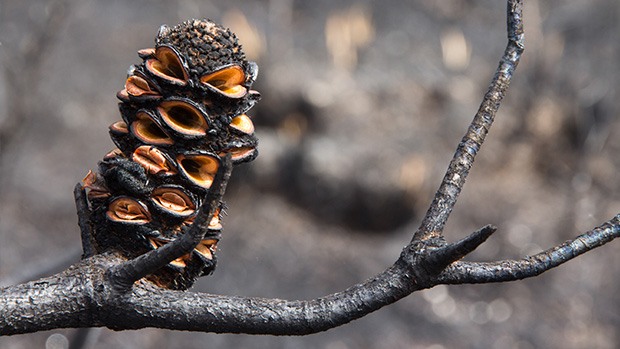
So, while bushfires can cause tremendous damage, it's not all bad—some fires can be vital for the renewal and survival of many of our native plant species.
Smoke
Researchers have long known that many species of Australian plants germinate after a fire. Indeed, many of us in Australia will have observed decimated and blackened bushland, which, shortly after, amazingly transforms into a riot of green, with new shoots popping up everywhere. Yet scientists looking into the effects of fire on germination found that treating many of these seeds with heat or ash didn't seem to do the trick. So what was it about bushfires that helped them germinate?
The answer, it's now known, is smoke.
While we all know that smoking is bad for us, that's not so for many Australian (and African) plants. Far from stunting their growth, it's just what they need to get from seed to seedling. Today, many Australian gardeners know to soak their native seeds in a solution of 'smoke water' to get them to grow.
But what's so special about smoke, and why does 'smoking' some seeds help them germinate?
In 2004, researchers in Western Australia found the answer—but it wasn't an easy task. In order to try and find out which chemical acts as the 'phoenix factor' that brings dormant, fire-reliant seeds to life, they had to sift through smoke's complex cocktail of over 4,000 chemicals!
After more than ten years' work, Kingsley Dixon and his team discovered the 'master molecule' in smoke that breaks dormancy in the seeds of a number of species. The molecule, which they named karrikinolide (after the Nyungar word, karrik, which means smoke) is in a class of molecules called butenolides. These are a byproduct of the combustion of cellulose together with other organic compounds in plant tissues. By dissolving the compound in water, the researchers were able to get many dormant Western Australian seeds, as well as species from around the world, to germinate rapidly. They also discovered many other species for which karrikinolide improves germination, such as lettuce, celery and others.
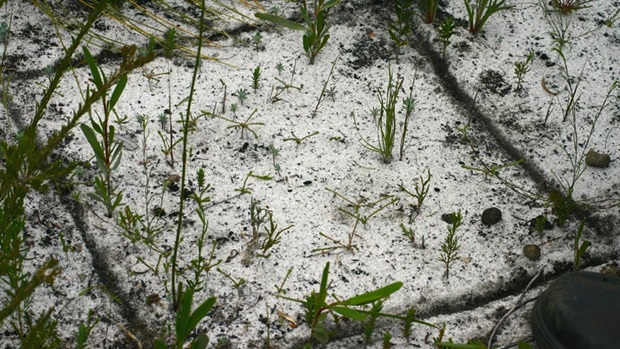
Fascinating as it is, the research wasn't just for fun, with many potential practical applications for ecology and agriculture. Not only do we now know that smoke can be used to germinate a large range of seeds, but it can be used for ecological research—by applying it to areas of soil, researchers can 'audit' the seed bank to determine the types and distribution of species.
Animals giving seeds a helping hand
Dispersal: when seeds get carried away
It's pretty common knowledge that bees help fertilise flowering plants by carrying pollen from one flower to another. But did you know that many plants also rely on insects and animals to transform from a seed to a seedling?
Animals help seeds by carrying them to a place where they can germinate. This may be as simple as a bird knocking seeds to the ground while landing on a branch. Perhaps more significantly, by eating the seeds (often attracted by the ripened fruit surrounding them), birds, bats, insects and other animals may carry them away from the parent plant in their gut, to be deposited somewhere else—in their poo.
Why is this dispersal an advantage for seeds? Well, spreading seeds out means less competition between the seedling and its parent plant, and between the young seedlings. Also, seeds may be moved to places that are more suitable for germination. The cadagai eucalypt, for instance, has a resin that stingless bees like to use in nest building. They collect the resin from inside the eucalypt fruit (capsule) and, inadvertently, the seeds as well. This is beneficial for the seed if it gets carried away to a suitable habitat.
Plants ❤ ants
With the highest ant biodiversity in the world, Australia has enough ants to keep the scientists who study them happy for a lifetime. And all these ants are essential for keeping plants happy, too.
Like stingless bees help cadagai eucalypts, ants play an important role in the germination of Australian seeds by carrying them away from their source. It's so important, in fact, that there's even a name for the dispersal of seeds by ants: myrmecochory. While they usually transport seeds a small distance, scientists have recorded an ant carrying a seed 180 metres—that's longer than two jumbo jets, a long walk for such a tiny creature! Ants not only move seeds across the ground, but underground to their tunnels. Here, some seeds are free to germinate, safe from predators and away from harsh above-ground weather conditions.
Wattles (acacias) are one type of plant that rely on ants for germination. Ants love the tasty stalk, packed with carbs and protein, that connects wattle seeds to their pods. They take the seed underground to feed the stalk to their larvae, dumping the seed. It's a perfect environment for a ready-to-germinate seed. Not only have the ants moved it away from predators, but they've also loosened and aerated the soil to build their tunnels, introducing oxygen and making space for moisture to enter the soil. Thanks to ants, wattles can thrive in the most arid of areas.
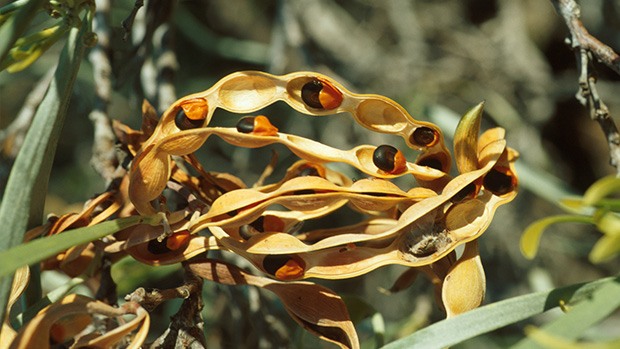
Birds with benefits
The cassowary is a flightless bird of northern Australia, which can stand up to 2 metres tall. It has a spur on its foot and a reputation for being dangerous if you get on its wrong side. It's also essential for the germination of rainforest plants.
In Australian rainforests, cassowaries are the only animals that consume large native fruits. Hardly what you'd call delicate eaters, they forage for fruits on the forest floor and swallow them whole—seed and all. After carrying the seeds around in their guts for a while, they drop them elsewhere, in their poo. In contrast to other rainforests in the world, Australian rainforests lack large fruit-eating animals such as primates. So, while smaller birds, such as fruit-eating pigeons, and bats do the work of eating (and dispersing) fruit with multiple, small seeds, cassowaries are the only way that large, single-seeded seeded fruits can be dispersed.
What's more, being deposited with a good dose of cassowary poo may also benefit some seeds when it comes to germination. Not only do droppings provide moisture, but they also protect the seeds from predators such as rodents, who don't like eating seeds in fresh scats—and, really, who can blame them?
A 2010 study looked into whether the benefits of being eaten by a cassowary go beyond mere dispersal, investigating the effects of gut scarification (weakening of the seed coat in the bird's digestive tract) and fruit pulp removal. It found that just passing through the gut of a cassowary improved the germination performance of large, single-seeded rainforest plants.
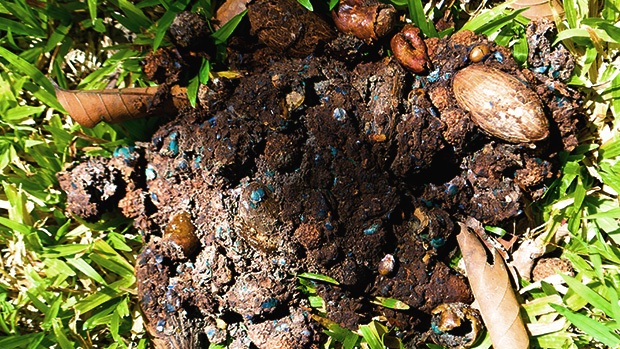
Emus are another big bird known to play an essential role in the germination of certain plants. Researchers have discovered that passing through an emu's gut can help the snottygobble, also known as the nodding geebung (Persoonia nutans), to germinate. An endangered Australian plant, the snottygobble is important as a food source for some animals like possums and emus—and it's very hard to wake from dormancy. It's not yet known exactly why being eaten by an emu is good for snottygobble germination, but possible explanations are that the seed coat is scarified by the emu's digestive tract; that the emu's gut flora helps the plant grow once it passes out the bird's other end; or that the seed gets coated with a chemical signal for germination while in the emu's gut.
Branching out
While at first glance the process of seed germination looks pretty simple, as we've seen, it turns out it's much more complex than 'just add water'. Many seeds rely on animals to disperse and germinate them and, for their part, those animals rely on seeds (as well as the surrounding fruit) for food. The life cycles of plants are also closely related to environmental conditions—things like bushfires, which we humans might tend to think of as undesirable, inconvenient or plain detrimental. So, next time you curse pesky ants at a picnic, remember that, like so many things in our natural world, they are part of a larger system—one that we need to better understand to ensure the survival of our world's diverse and fascinating flora and fauna.
Video: Growing mung beans as seen with x-ray (ABC RN / YouTube). View video details.
Source: https://www.science.org.au/curious/earth-environment/plant-germination
0 Response to "There Us No Cold Only Absence of Heat Meme Funny"
Post a Comment